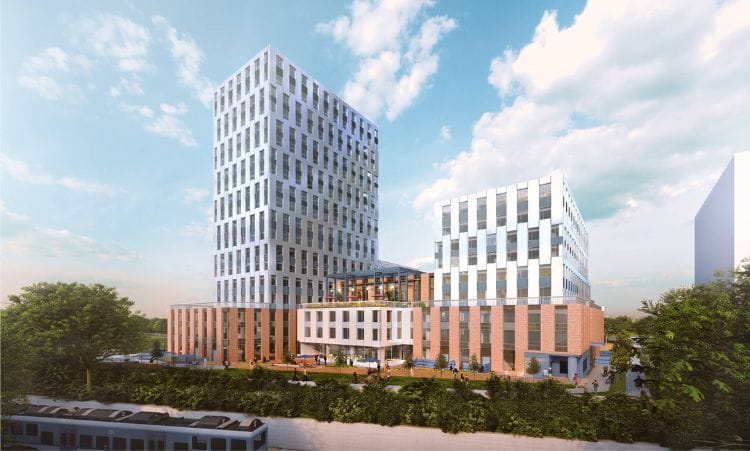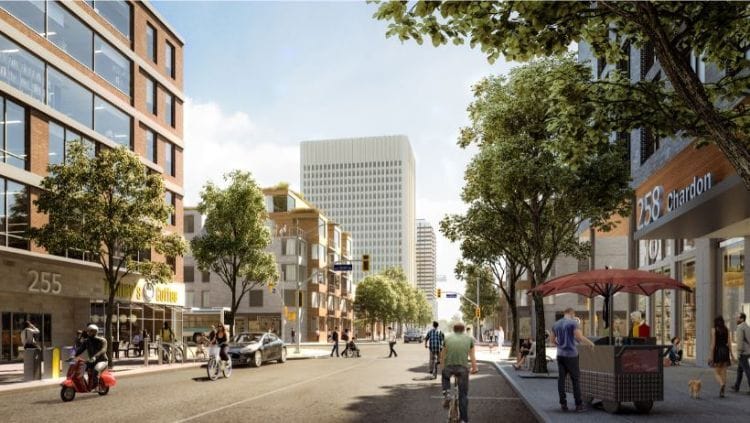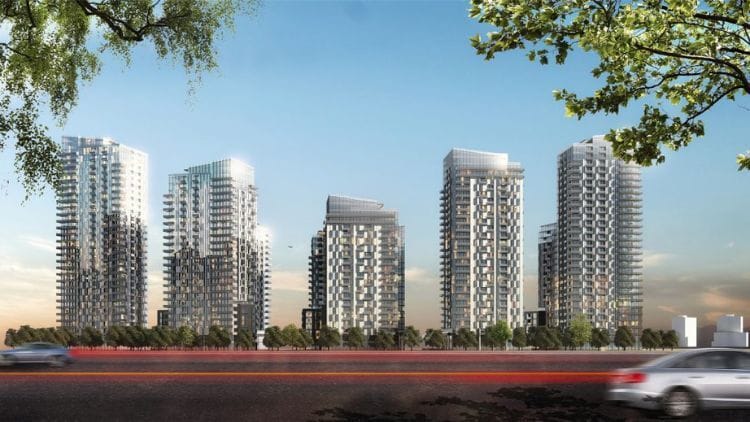Ottawa is growing fast. In 2019, the city reached a population of one million, and that number is expected to grow to 1.136 million by 2036 and then to 1.4 million by 2046. That means a lot of construction projects need to be built in order to house the city’s new residents.
With only so much land, developers are now building up. But they are also focusing on areas with lots of transit. Their visions are aligned with provincial policies, which in recent years have doubled down on transit-oriented development.
“The official plan puts the highest and densest developments near light rail stations, near bus rapid transit stations. And it's all in the interest of trying to help people live in communities where they can use public transit or active transportation to move around,” said Kitchissippi Coun. Jeff Leiper, who also chairs the city’s planning committee.
The city actually began exploring transit-oriented development in the 1980s when the transitway was built. It then seriously started working to build such projects a few decades later in preparation for the eventual opening of the light rail Confederation Line, which would add 12.5 kilometres of rail service from Tunney’s Pasture Station to Blair Road.
It then set a target density range of approximately 200 to 400 people and jobs per gross hectare within each TOD Plan area.
Leiper said Tunny’s Pasture is the perfect example of development planned around the bus and light rail terminals. For years, plans have been made to develop the current federal office complex site with housing, retail, recreation, and green space.
Somewhere between 7,000 and 9,000 housing units are planned, with upwards of 1,800 considered affordable. That is almost double the amount of housing planned in the original 2014 draft, but changes were made after the COVID-19 pandemic disrupted in-person work. The federal government also has plans to cut its office footprint in Ottawa by 50 per cent.

Drawings for Gladstone Village.
Other areas that could see significant development are Blair Station in Orleans and Centrepointe, where light rail will soon run through Algonquin College.
“It's a very different approach than the decades of urban sprawl we've seen. We are trying to reverse some of those trends,” said Leiper.
For decades after the war, cities in North America have developed through sprawl. As their populations have grown, new subdivisions have been built, often on agricultural land, to accommodate that growth in less dense development.
But that has led to some problems. An expanded geographic area means more places need infrastructure investment. Serving suburban communities with transit also becomes costly. We have seen this issue in local communities like Barrhaven, Kanata, and Stittsville, which have long complained about limited bus options and longer commute times.
Leiper said this can result in more people hopping in their cars instead, creating environmental implications.
“When transit is insufficient or expensive to provide, people drive. And, you know, in North American cities, driving accounts for about 40 per cent of the greenhouse gas emissions that come out,” he said. “So if we can encourage people to drive less by living closer to the amenities that they use, by living closer to public transit that is less expensive to provide because of the population density, we can make a significant dent in our greenhouse gas emissions.”
According to 2016 data, only 37.3 per cent of Ottawa residents commute by modes of transportation that are not a vehicle. The city has the goal of making that 50 per cent by 2031.
There is also an impact on affordable housing
It's not just the typical rental and condo markets trying to take advantage of Ottawa’s new light rail transit system. Ottawa Community Housing also considers public transit when planning its future builds.
In September, OCH broke ground on Gladstone Village, a new 336-unit Centretown housing project. It will be located near Little Italy, Chinatown, and the newly reopened Corso Italia LRT Station.
The two buildings will be nine and 19 storeys tall and will include studio to five-bedroom apartments, which can be uncommon in downtown areas.

Renderings showing what Tunney's Pasture could one day look like.
Next door, the city is looking to take advantage of a new mixed-use community at 1010 Somerset. It will include a new French school, expansion to the Plant Recreation Centre, housing, and expanded green space.
Somerset Ward Coun. Ariel Troster recently said at council that it's a rare opportunity to build new development in the heart of the city.
While desperately needed in a city growing with a surging homelessness crisis, it also has a downside. Leiper said more people living near transit could drive property values up.
“We don't have a lot of tools as a municipality to require affordable housing near transit. There is a regime called inclusionary zoning. Under the former Wynne provincial Liberal government, it proposed giving Ontario municipalities significant power to require a large amount of affordable housing in new developments, particularly near transit. The Ford government has rolled that back so that we don't have the power to require a significant amount of affordable housing, particularly not deeply affordable housing,” said Leiper.
That concern became real a few years ago when the city council voted to approve a large-scale development project at 900 Albert Street, which is next to the Bayview LRT Station. The original plans called for three towers at 59, 55, and 50 stories tall—higher than the 30-storey permitted under the Bayview Station Secondary Plan.
But developers Trinity paid the city $975,000 to increase the height of the two taller towers to 65 and 56 stories. The third was lowered to 27-storeys.
In exchange for the new heights, then Somerset Coun. Catherine McKenney asked for reassurance that affordable housing would be included in the development. The Bayview Secondary Plan also stated that 25 per cent would need to be considered affordable. But because of the lack of oversight, there was no legal responsibility.
Construction work at 900 Albert Street has not started at the time of publication.




